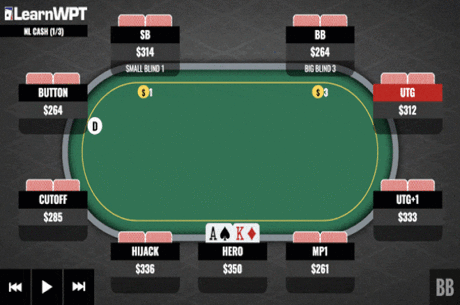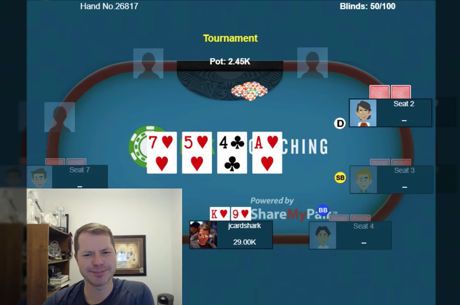High Stakes Poker Reviewed: Negreanu Comes Out Firing on Series Debut

Fans of "classic" era televised poker often highlight High Stakes Poker as a high water mark when it comes to such programming.
The show debuted in early 2006 at the height of the poker "boom," running for seven seasons and 98 episodes, the last of which aired in the spring of 2011. Many of poker's most famous players took part, with buy-ins ranging from $100,000 to $1 million and the pots sometimes reaching the high six figures. In fact, once in Season 4 when Guy Laliberté and David Benyamine built a pot of more than $1.2 million in a hand before negotiating to reduce it.
Years later the shows remain highly entertaining, and can even be educational. For new poker players they introduce the game while illustrating many strategic concepts, while those with experience can watch and recognize how certain strategies have evolved over the years since the shows aired.
For the first episode of the first season, Daniel Negreanu hit the ground running with a lot of aggressive play early on.
High Stakes Poker: Season 1, Episode 1
| Originally aired: | January 16, 2006 |
| Location: | Golden Nugget, Las Vegas |
| Players: | Daniel Alaei, Doyle Brunson, Jerry Buss, Ted Forrest, Barry Greenstein, Jennifer Harman, Amir Nasseri, Daniel Negreanu |
| Commentators: | A.J. Benza, Gabe Kaplan |
| Game: | no-limit hold'em cash game, minimum $100,000 buy-in |
| Stakes: | blinds $300/$600, ante $100 |
Strategic Concepts
- overbetting — by Negreanu on the flop in a three-way hand with Nasseri and Buss — 5:00 mark
- limping — frequently represented; see, for instance, Brunson do so with ace-king (and then overbet afterwards) — 13:00 mark
- slow playing — by Nasseri with pocket aces in a hand versus Alaei — 24:00 mark
Big Hand Alert
- a set-over-set situation leads to Nassari and Forrest building a pot of $206,600 — 30:00 mark
In this Series
- 1 High Stakes Poker Reviewed: Negreanu Comes Out Firing on Series Debut
- 2 High Stakes Poker Reviewed: Ted Forrest Runs It Back Up
- 3 High Stakes Poker Reviewed: Sam Farha Joins Game, Time to 'Raisy-Daisy'
- 4 High Stakes Poker Reviewed: Sam Farha and Daniel Negreanu Clash
- 5 High Stakes Poker Reviewed: Big Hands for Jerry Buss
- 6 High Stakes Poker Reviewed: 'Fast' Freddy Deeb Clashes with Negreanu
- 7 High Stakes Poker Reviewed: Johnny Chan Keeps Getting Aces
- 8 High Stakes Poker Reviewed: Mimi Tran Hits the Ground Running
- 9 High Stakes Poker Reviewed: When We Learned About 'Going South'
- 10 High Stakes Poker Reviewed: Enter Esfandiari and Hellmuth
- 11 High Stakes Poker Reviewed: Kid Poker vs. the Poker Brat
- 12 High Stakes Poker Reviewed: Esfandiari Makes Big Call Against Negreanu
- 13 High Stakes Poker Reviewed: Negreanu, Hellmuth Climb Back in First Season Finale









